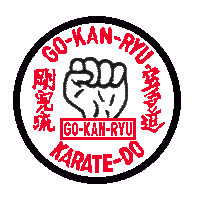 |
 |
 |
| Frozen Shoulder & Rotator Cuff Injury |
| A Guide to the Treatment & Prevention of Shoulder Injuries ! |
| Have you ever been working out in the dojo or at the gym, pushing a heavy weight or grappling & heard a popping sound in your shoulder. When all of a sudden there's a sharp pain in your shoulder ? These are all signs of the same thing; a shoulder injury. Whether you want to call it a frozen shoulder, a rotator cuff tear or tendinitis shoulder, it's really all the same. A tear or strain in the rotator cuff muscles & tendons. The shoulder joint is a truly remarkable creation. It's quite a complex formation of bones, muscles & tendons & provides a great range of motion for our arm. The only downside to this extensive range of motion is a lack of stability, which can make the shoulder joint vulnerable to injury. Lets have a quick look at the shoulder joint in a little more detail. The shoulder is made up of three bones, & the tendons of four muscles.(Remember, tendons attach muscle to bone.) The bones are called the Scapula, Humerus & the Clavicle. Or, in laymans terms, the shoulder blade, the upper arm bone and the collerbone, respectively. The four muscles which make up the shoulder joint are called the Supraspinatus, Infraspinatus, Teres Minor & the Subscapularis. |
| It is the tendons of these muscles, which connect to the bones, that help to move your arm. In the picture to the right, three of the four muscles are visible, the supraspinatus, the infraspinatus and the teres minor. These are the muscles which are viewed from the rear, or posterior. The subscapularis is not visible because it can only be viewed from the front, or anterior & this particular view only shows the muscles from the rear, as is if looking from someone's back. Anyway, enough of the technical stuff. |
 |
| Causes |
| There are two major causes of most shoulder injuries. The first being degeneration, or general wear & tear. Unfortunately, the shoulder is a tendinous area that receives very little blood supply. The tendons of the rotator cuff muscles receive very little oxygen & nutrients from the blood supply, & as a result are especially vulnerable to degeneration with aging. This is why shoulder problems in the elderly are common. This lack of blood supply is also the reason why a shoulder injury can take quit a lot of time to heal. The second cause of most shoulder injuries is due to excessive fors, or simply putting too much strain on the tendons of the shoulder muscles. This usually occurs when you try to lift something that is too heavy or when a force is applied to the arm while it's in an unusual or awkward position. |
| Symptoms |
| There are two common symptoms of a shoulder injury, pain & weakness. Pain is not always felt when a shoulder injury occurs, however most people who do feel pain, report that it's a very vague pain which can be hard to pinpoint. Weakness, on the other hand, seems to be the most reliable symptom of a shoulder injury. Common complaints include an inability to raise your arm above your head or to extend your arm directly to the side or front. In most case, the larger the tear or damage to the tendons, the harder it is to move your arm & the injured area. |